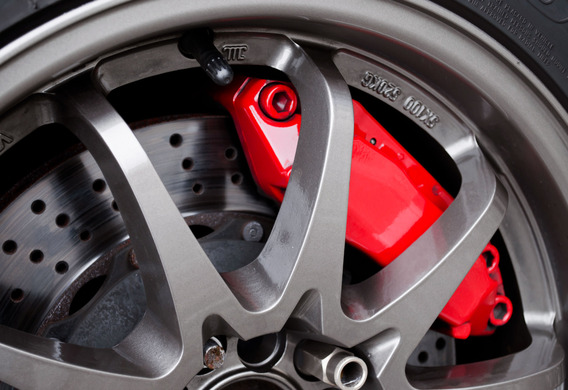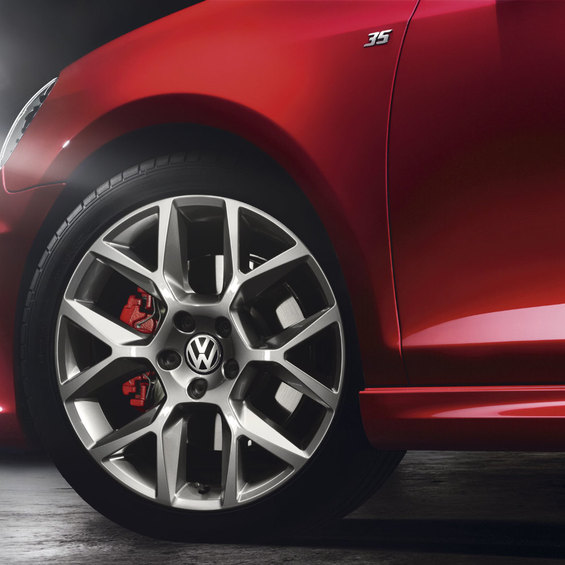
The disc is the center of the wheel. It covers the hub (the steering gear in the centre of the wheel) and connects it to the rim (the outer part of the wheel).
In a single unit with car tires, the disks ensure traffic safety in different road and weather conditions. They instantly react when the driver needs to slow down or turn sharply. Also, the disks condition dynamic properties of the car. For example, light-alloy discs make the weight of the machine easier, which increases the fluidity of the move, because the load on the body is less. To some extent, the choice of disks for fuel consumption is affected: the car with large and heavy disks is spending more petrol.

But not only the safety and aerodynamic properties describe the automobile disks. Different shapes, sizes, styles, colours, caulked or chrome-able, they can significantly change the appearance and even the character of the most ordinary car. History of wheel drive wheels
History of wheel drive wheels
The history of the automobile discs begins in the distant past. Thousands of years ago, one of humanity's most important inventions came up with the idea of a wheel. There were carts and carts, then the carriages, and later the first cars.
At the end of the 19th century, tires appeared. This time is considered to be the date of birth of the automobile disks
At first, the wheels were ordinary wooden circles. But they were very fragile, so they changed their wheels with spokes, lighter and more resilient in the course of evolution. At the end of the 19th century, tires appeared. This is the time taken to consider the date of birth of the automobile disks. They made them out of metal and they looked like the ones we could see today.
Unasperable in service and wear-resistant, metal disks became popular immediately. At first they were made of metal sheets by stamping. Over time, there were cast discs that were spilled from aluminium alloy with other metals. The Lite discs are lighter and more durable, and they are better able to meet the demands of modern cars. Soon it was time for the forged disks-very strong and at the same time flexible.
The most sophisticated design is the "B B" disc for low pressure tyres. Badlock is a device that does not allow the tire to fly off the disc, even if it is completely douchey
In 2012, Australian scientists presented a ten-year development-monolithic carbonite drive. It is made of composite materials, it weighs twice as much as the cast of the disc, and in strength and stiffness is not inferior to the forged. The company is promising that carbonov disks will help to fuel more fuel, as well as improve the efficiency of the aerodynamics of the car. The start of serial production of these drives for the Porshe 911 is scheduled for late 2013.
Wheel device
There are several holes in the car drive: small on a plane and one in the center for the mounting and installation on the hub. Other openings and windows of various forms create a unique appearance of the disc and also serve to ventilate the brake mechanism and influence the weight of the wheel. Many modern discs have large windows, and the partitions between these windows play the role of blades-similar to the blades of propeller. Thus, there is a strong air flow to the braking mechanism. However, these discs cannot be changed: the right and left wheels of the "blades" have different directions. Often the discs make a little bit convex. This allows for better integration of the wheel as a whole and increases the lateral stiffness of the wheel (reduces the chance of deformation).
Options to consider when selecting disks
The drives differ in width, diameter, weight, number of mounting holes. For example, the owner of a racing car will probably install light models of discs that will ensure good contact with the road surface. The owners of the SUV, on the contrary, will prefer solid, heavy disks-according to the weight of their car.
The most important thing to consider when selecting disks is their match to the car model. It is best to read the recommendations in the service book or the stickers on the racks within the passenger compartment. It is not desirable to go beyond the specified values. If the drives are too large, the wheel will turn on the covers.
The wheel disc is just as stylish accessory as a golden lighter or a pair of brandy sunglasses. So the price is unlimited. The owner's fantasy comes to the jewellery of the discs
As for the type of disks, the choice depends entirely on the car owner, and more precisely, from the amount that he is ready to spend on the disks. Stampobaths are cheap, but have average safety margin and rather quickly lose their original appearance. Light-cast disks will cost more, but they improve car dynamics. It is true that these discs are quite fragile, because the casting provides the metal with grainy structure. In the process of exploitation on cast discs the microfractures are formed. The disc is losing strength and can be split if the impact is strong. The repair and correction of the cast disc does not return the original qualities: the restoration of the external view will not relieve the internal hidden cracks. The disk drives are the most expensive. They are made by a hot-volumized aluminium alloy with magnesium, silicon, copper and manganese, and then subjected to a uniform tempering within a few hours. Thus, the disks acquire a fibrous structure that makes them strong and resilient. In contrast to the lite, with high loads, the forged disks are not destroyed, but only slightly deformed. It is almost impossible to split the disc. The disk drives are most often installed in sports cars-their design, weight and durability and durability are fully consistent with the high requirements of racing machines.
The disk drives can be either coated or not. Stambed discs are buried, similar to weapons. The same electroplating coatings are known as chrome disks. Most of the discs are covered with regular varnish, right on top of the paint. There is also a special lacquer to protect against corrosion. It is very rare to see the discs covered by the enamel, usually white. This coating is used for exclusive luxury cars. Today it is possible to see even neon and fluorescent automotive discs-such coatings are made in specialized workshops or independently with the help of the TAT 33, which is added to the transparent automobile varnish.
The chrome plating process means the immersion of the disc in the bath with electrolyte and electric current. Under these conditions, the metal atoms settle on the surface of the disc, forming a chromium plated layer
Of course, many car enthusiasts do not imagine the actual tuning without the beautiful and fashionable accessories for wheeled discs that will present the car in a favorable light and allow it to be allocated on the road.
In 2006, a unique Tire Tagz, developed in Taiwan, appeared in Europe and Russia. This is a programmable exclusive wheel illumination with a USB interface, which works because of the effect of "inertias of visual perception". A small plastic gadget is securely fixed in the center of the automotive disc, and can only be removed by a special key. When the car moves, passers-by are observing different glowing images or inscriptions on the surface of the vehicle, at the owner's request. Tire Tagz, a prominent British car show host named "Top Gear", described it as "witchcraft".







